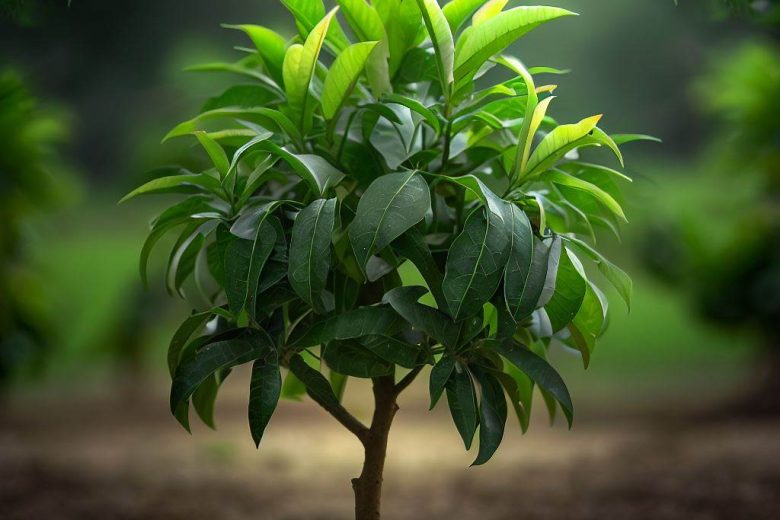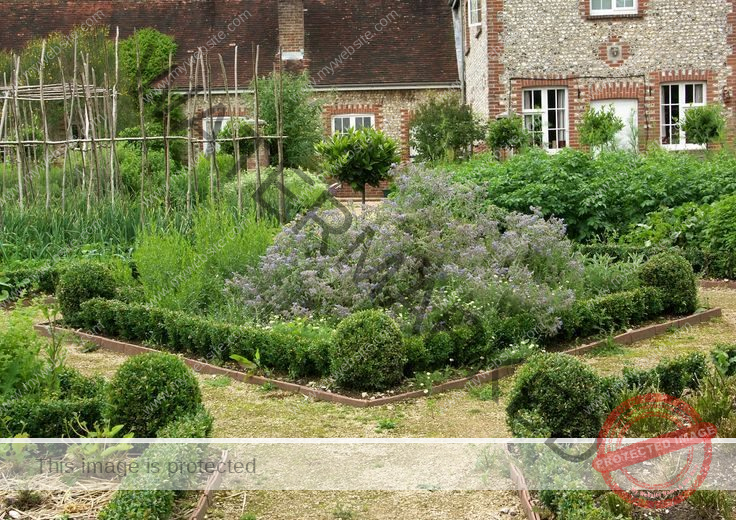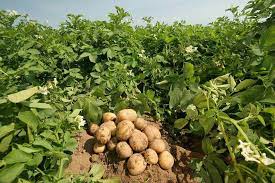Winter gardening offers an exciting opportunity to continue your gardening journey throughout the year. Contrary to popular belief, many vegetables thrive in cooler temperatures, producing delectable yields.
Here in this guide, we are taking you on an experience and the joys of winter gardening with a diverse selection of 30 fast-growing vegetables. From peppery radishes to nutrient-packed spinach and versatile kale, these cold-hardy greens thrive in cooler temperatures. Turnips, snow peas, and baby carrots are quick to mature, while herbs like cilantro and thyme add fragrance to winter dishes.
30 Fastest Growing Vegetables in Winter
1. Radishes (Raphanus sativus)
Radishes are winter champions, maturing in as little as 3 weeks. Their quick growth and peppery flavor make them a delightful addition to salads and sides.
Read Also: 20 Fast Growing Fruit Trees Zone 6
2. Spinach (Spinacia oleracea)
Spinach thrives in cool weather, offering an abundance of vitamins. Its tender leaves can be harvested as baby spinach for a swift, nutritious addition to meals.
3. Arugula (Eruca sativa)
Arugula’s distinct peppery taste develops rapidly, ready for harvest within a month. It’s a favorite for winter salads, bringing a punch of flavor.
Read Also: 25 Fast-Growing Fruit Trees Zone 1
4. Baby Kale (Brassica oleracea)
Baby kale varieties like Lacinato and Curly Kale grow swiftly and are cold-hardy. Packed with nutrients, they elevate winter smoothies and dishes.
5. Bok Choy (Brassica rapa subsp. chinensis)
Bok choy, a versatile Asian green, reaches maturity in just a month. Its tender stalks and vibrant leaves are perfect for stir-fries and soups.
6. Mustard Greens (Brassica juncea)
Mustard greens thrive in chilly weather, developing robust flavor. They can be harvested as microgreens or full-sized leaves for culinary creativity.
Read Also: Container Gardening For Beginners [Complete Guide]
7. Winter Lettuce Varieties (Lactuca sativa)
Cold-resistant lettuce varieties like Winter Gem and Arctic King grow rapidly, offering crispy leaves for sandwiches and salads.
8. Green Onions (Allium fistulosum)
Green onions are among the easiest to grow. They sprout quickly and can be harvested as young shoots, adding a mild onion flavor to dishes.
- 9. Radicchio (Cichorium intybus)
Radicchio’s bitter leaves are a winter delicacy, adding color and complexity to salads. It matures within weeks, providing a unique taste.
Read Also: [Beginners’ Guide] How To Grow Carrots At Home Successfully
10. Turnips (Brassica rapa subsp. rapa)
Turnips grow rapidly, with both roots and greens edible. Their peppery and slightly sweet flavor shines in hearty winter stews.
11. Snow Peas (Pisum sativum var. saccharatum)
Snow peas are cool-weather favorites, producing crisp pods within weeks. Their sweet crunch enhances stir-fries and vegetable medleys.
12. Carrots (Daucus carota subsp. sativus)
Baby carrots are quick to mature and become sweeter in cold weather. They’re perfect for snacking, roasting, and adding natural sweetness to dishes.
13. Cilantro (Coriandrum sativum)
Cilantro grows rapidly and thrives in cool temperatures. Its vibrant leaves and fragrant stems are essential for winter salsas and garnishes.
14. Swiss Chard (Beta vulgaris subsp. cicla)
Swiss chard withstands cold climates, offering colorful stems and nutrient-rich leaves. It’s a versatile green for sautés and soups.
15. Mizuna (Brassica rapa var. nipposinica)
Mizuna, a Japanese green, thrives in the cold. Its feathery leaves provide a mild, peppery taste to salads and Asian-inspired dishes.
16. Kale (Brassica oleracea)
Kale’s hardiness and rapid growth make it a winter superstar. Its leaves become sweeter after frost, adding depth to salads and smoothies.
17. Green Leaf Lettuce (Lactuca sativa)
Green leaf lettuce varieties like Black-Seeded Simpson grow swiftly, offering tender leaves for salads and wraps.
18. Tatsoi (Brassica rapa subsp. narinosa)
Tatsoi’s spoon-shaped leaves thrive in winter. This Asian green is mild and versatile, perfect for stir-fries and sautés.
19. Pak Choi (Brassica rapa subsp. chinensis)
Pak choi, or bok choy, is cold-tolerant and quick-growing. Its mild taste and crisp texture elevate various dishes.
20. Komatsuna (Brassica rapa var. perviridis)
Komatsuna is a Japanese green that grows rapidly in cold weather. Its tender leaves are excellent for stir-fries and salads.
21. Sorrel (Rumex acetosa)
Sorrel’s lemony tang shines in winter. Its vibrant leaves are perfect for soups, sauces, and adding brightness to dishes.
22. Endive (Cichorium endivia)
Endive’s curly leaves offer a slightly bitter bite to salads. It grows swiftly and adds texture to winter dishes.
23. Green Radish (Raphanus sativus)
Green radish varieties mature quickly, providing a peppery crunch to salads and slaws. They’re cold-hardy and colorful.
24. Red Radish (Raphanus sativus)
Red radishes grow rapidly, adding vibrant color and zesty flavor to salads, snacks, and garnishes.
25. Baby Beet Greens (Beta vulgaris)
Beet greens, when harvested young, offer a delicate texture and earthy taste. They’re a nutritious addition to salads and sautés.
26. Green Mizuna (Brassica rapa var. nipposinica)
Green mizuna, similar to red mizuna, grows rapidly and adds a peppery touch to salads and Asian dishes.
27. Butterhead Lettuce (Lactuca sativa)
Butterhead lettuce varieties like Bibb and Boston grow swiftly, offering tender, buttery leaves for salads.
28. Mâche (Valerianella locusta)
Mâche, also known as corn salad, thrives in cooler temperatures. Its small, tender leaves are perfect for winter salads.
29. Collard Greens (Brassica oleracea)
Collard greens are cold-resistant and rich in nutrients. They’re essential for Southern-inspired dishes and hearty stews.
30. Chinese Cabbage (Brassica rapa subsp. pekinensis)
Chinese cabbage, or Napa cabbage, grows rapidly and is used in various Asian dishes, including kimchi and stir-fries.
Benefits of Winter Gardening
Winter gardening not only provides you with fresh produce but also helps in pest control and disease prevention, as many pests are dormant during this period.
Selecting the Right Winter Vegetables
Choosing suitable winter vegetables is crucial. Opt for varieties that are hardy and known for their resilience in frosty conditions.
Choosing the Right Growing Methods
Optimize your winter gardening experience by selecting the right growing methods.
1. Raised Beds
Raised beds provide good drainage and can be covered for frost protection.
2. Greenhouses and Cold Frames
These structures create a microclimate, shielding your plants from harsh weather conditions.
Caring for Winter Vegetables
Proper care ensures your winter vegetables thrive despite the cold.
1. Adequate Watering
Water your plants correctly, ensuring they receive enough moisture without waterlogging.
2. Mulching for Warmth
Mulching helps in retaining soil warmth and moisture, crucial for winter plants.
3. Protecting from Frost
Covering your plants during frosty nights prevents damage and promotes healthy growth.
Harvesting Your Winter Bounty
Harvest your winter vegetables at the right time for peak flavor and nutrition.
Delicious Winter Recipes
Put your harvested winter produce to use with these delightful recipes.
Winter Vegetables to Grow in Australia:
In Australia, consider cultivating fast-growing winter vegetables like radishes and baby spinach. These cold-tolerant options thrive in the cooler climate, providing fresh greens for your table.
Fast Growing Vegetables in Winter in the USA:
In the USA, quick-maturing vegetables such as lettuce and radishes are ideal for winter gardening. These fast-growers can be harvested within weeks, making them perfect choices for colder regions.
Winter Vegetables to Grow in Pots:
For container gardening, opt for compact winter vegetables like arugula and green onions. These container-friendly plants thrive on patios or balconies, adding freshness to your winter meals.
Winter Vegetables to Grow in Victoria:
In Victoria, consider planting Swiss chard and turnips, which are well-suited for the region’s winter climate. These vegetables offer a mix of flavors and can thrive even when temperatures drop.
Winter Vegetables to Grow in QLD:
In Queensland, go for vegetables like snow peas and bok choy that can tolerate milder winters. These varieties can still thrive in the state’s warmer climate during the cooler months.
Vegetables that Grow in Winter in South Africa:
In South Africa, crops like spinach and carrots can be grown during the winter months. These vegetables benefit from the country’s diverse climates, making them excellent choices for a winter harvest.
Best Vegetables to Grow in Winter:
Lettuce, kale, and radishes are among the best vegetables to grow in winter due to their rapid growth and cold tolerance. These choices ensure a steady supply of fresh produce throughout the chilly season.
Can I grow these vegetables in containers?
Yes, many of these winter vegetables can be grown successfully in containers, provided they have adequate space and proper drainage.
Do I need to fertilize my winter garden?
While some fertilization might be beneficial, avoid over-fertilizing as plants have reduced nutrient requirements during winter.
What can I do to prevent pests in my winter garden?
Encourage natural predators like ladybugs and use row covers to prevent pests from infesting your crops.
How often should I water my winter garden?
Monitor soil moisture and water when the top inch of soil feels dry. Be cautious not to overwater, as this can lead to root rot.
Can I start these vegetables from seeds indoors?
Absolutely, starting seeds indoors a few weeks before the last frost allows you to get a head start on the growing season.
Conclusion
Whether you’re a seasoned gardener or a beginner, these fast-growing winter vegetables offer a satisfying experience even during colder months. Their resilience and quick growth make them valuable additions to your winter garden, providing fresh and nutritious produce for your table.




